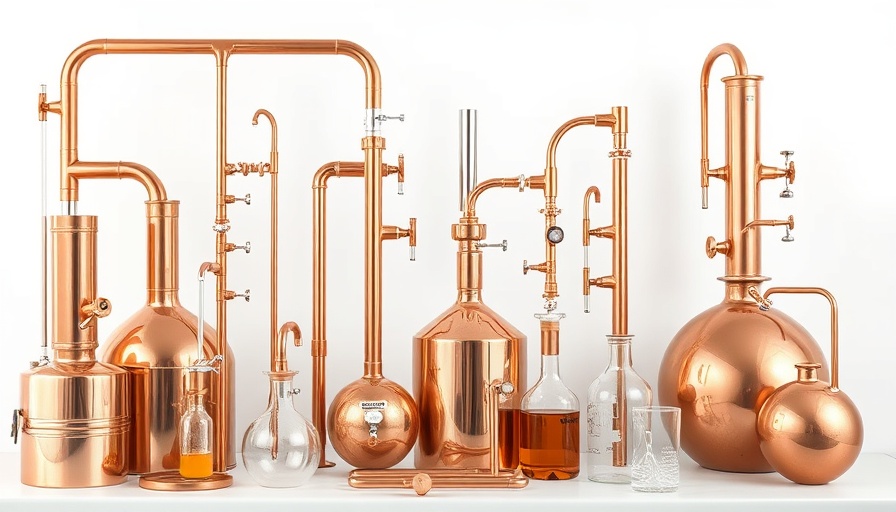
The Art of Home Distillation: A Guide to Crafting Spirits Legally and Responsibly
Home distillation is not just a hobby; it’s an art that blends science, creativity, and the satisfaction of creating something uniquely your own. For enthusiasts—whether seasoned or new to the practice—the right equipment is critical in achieving both quality and safety in the distillation process. In this guide, we’re going to explore what home distillation involves, the essential equipment needed for effective and safe distillation, and the legalities to consider.
Understanding Home Distillation
At its core, home distillation is the process of separating components from a liquid mixture through selective boiling and condensation. This practice is commonly used for crafting spirits, but it can also be applied to the distillation of water, essential oils, and other concentrated extracts. The variations in distillation methods open new avenues for flavor exploration and experimentation—providing a sense of achievement and raw personal expression for those who engage in it.
The Legal Considerations of Distilling
Before embarking on your distillation journey, it’s important to familiarize yourself with the legal landscape. In many regions, distilling alcohol for personal consumption without proper licensing is illegal. It’s essential to consult local laws and regulations to ensure compliance. Ignoring these rules could result in significant fines or legal implications. As home distillation grows in popularity, budding distillers should reach out to local distilling organizations or join online forums to gain insights and resources that cater to local regulations.
Essential Equipment for Home Distillation
Creating a successful home distillation setup involves selecting the right tools and equipment. Here’s a rundown of what’s typically needed:
- The Boiler: This is where the process kicks off. Boilers can range from simple stovetop pots to sophisticated standalone units designed specifically for distillation.
- The Condenser: Responsible for cooling vapor back into liquid, condensers commonly feature a coiled tube that circulates cold water to facilitate condensation.
- The Column: For those pursuing higher purity in their final product, integrating a column allows for more refined separation through repeated cycles of vaporization and condensation.
- The Collection Vessel: Once the distillate is condensed, it is collected in a vessel tailored to individual preferences, which can influence the flavor and aroma of the final product.
Mastering the Distillation Process: Step-by-Step
Although the distillation process might seem daunting at first, it is rooted in basic physical principles. The following steps provide a simplified roadmap for home distillers:
- Preparation of the Mash: For spirit-making, start with a mash made from grains, fruits, or other fermentables and allow it to ferment, resulting in a liquid rich in alcohol.
- Heating the Mash: The next step is to heat the fermented mash in the boiler. Alcohol has a lower boiling point than water, allowing it to vaporize first.
- Condensation: The vapor rises into the condenser, cooling and reverting to liquid form as it collects.
- Collection: The liquid is gathered in your collection vessel, enriched with a higher alcohol concentration.
Practical Insights: Elevating Your Distillation Game
After mastering the fundamentals, distillers can explore unique approaches to enhance their craft. Consider experimenting with:
- Flavor Additives: Incorporating herbs, fruits, or spices during the distillation process can yield unique flavor profiles.
- Ageing Techniques: For spirit enthusiasts, aging distilled products in wooden barrels can contribute to more complex flavors and maturation.
- Sustainable Practices: Using local, organic ingredients not only enhances flavor but also aligns with eco-friendly practices, which are increasingly desired by consumers.
Building Community Connections Through Distillation
The world of home distillation can be a bridge to building community connections. Enthusiasts often share recipes, ideas, and even hosting local distillation competitions or tasting events, fostering a spirit of collaboration and camaraderie. Engaging with groups can provide invaluable support for novices while allowing more experienced distillers to share their skills.
Conclusion: Your Journey Awaits
Home distillation is a rewarding endeavor, offering both creative expression and the joy of crafting spirits from scratch. By equipping yourself with the right tools and knowledge while adhering to local laws, you can successfully embark on this exciting journey. Embrace the learning process and don’t hesitate to connect within the distillation community for support and inspiration!
 Add Row
Add Row  Add
Add 




 Add Row
Add Row  Add
Add 

Write A Comment